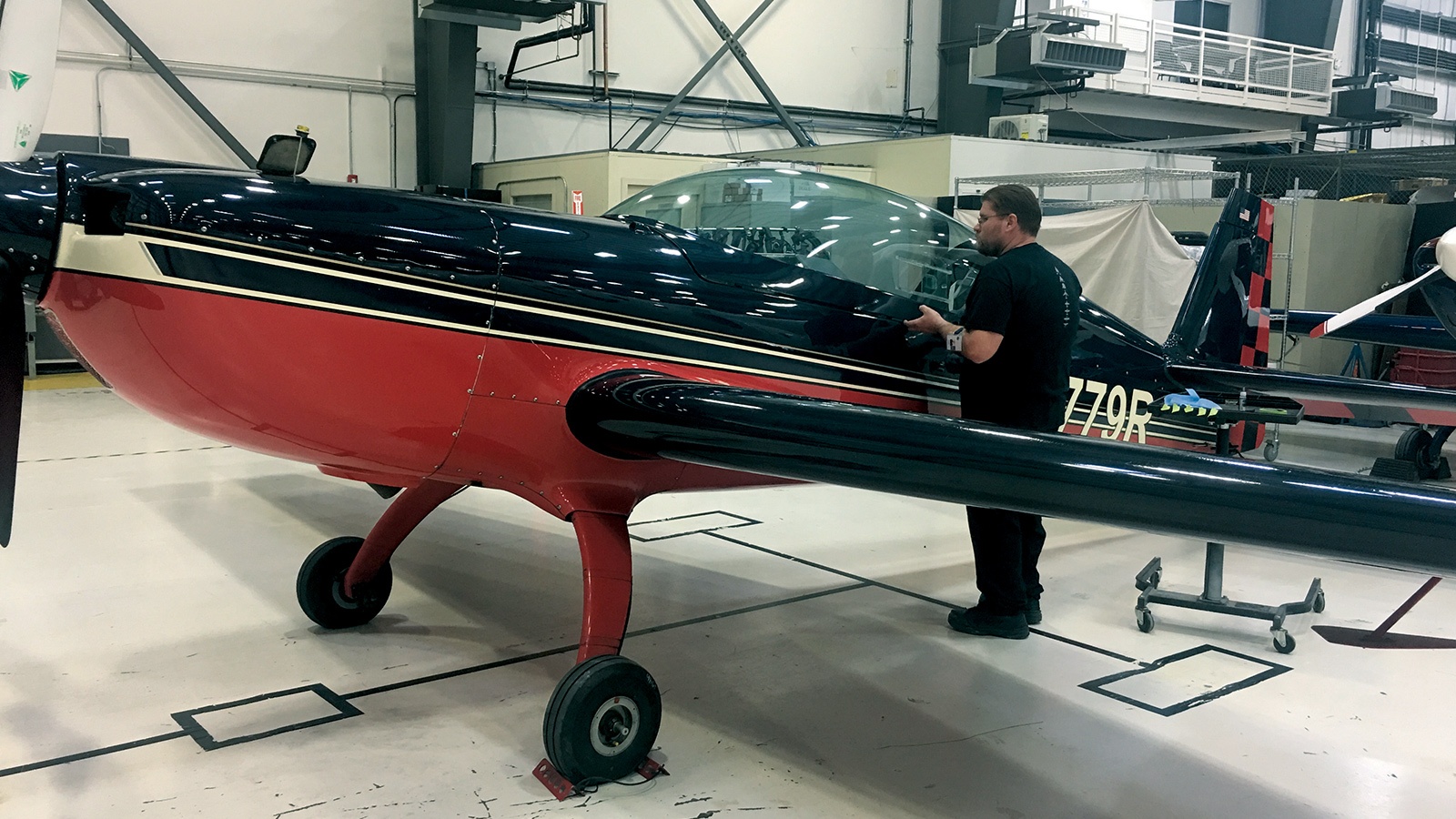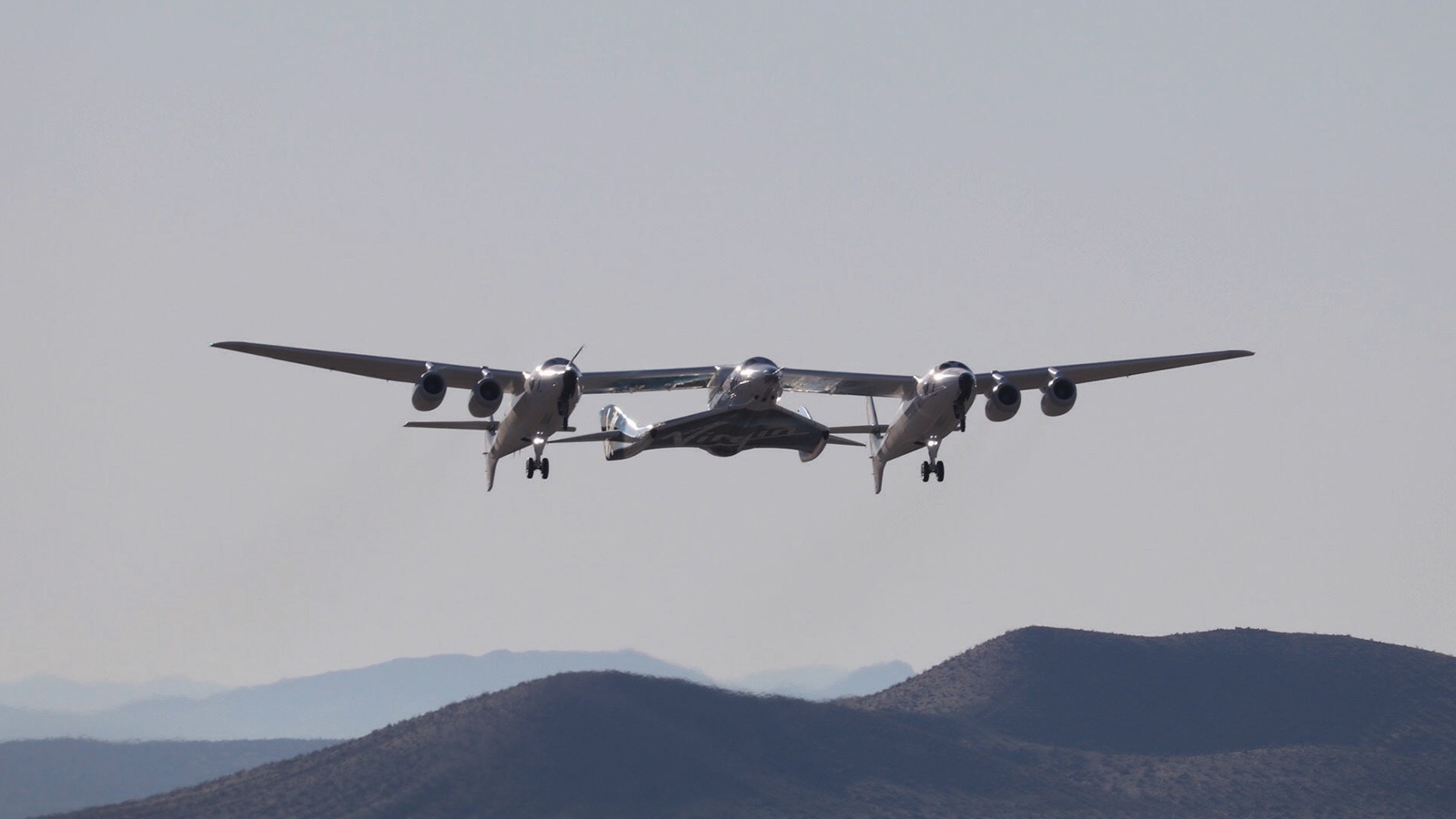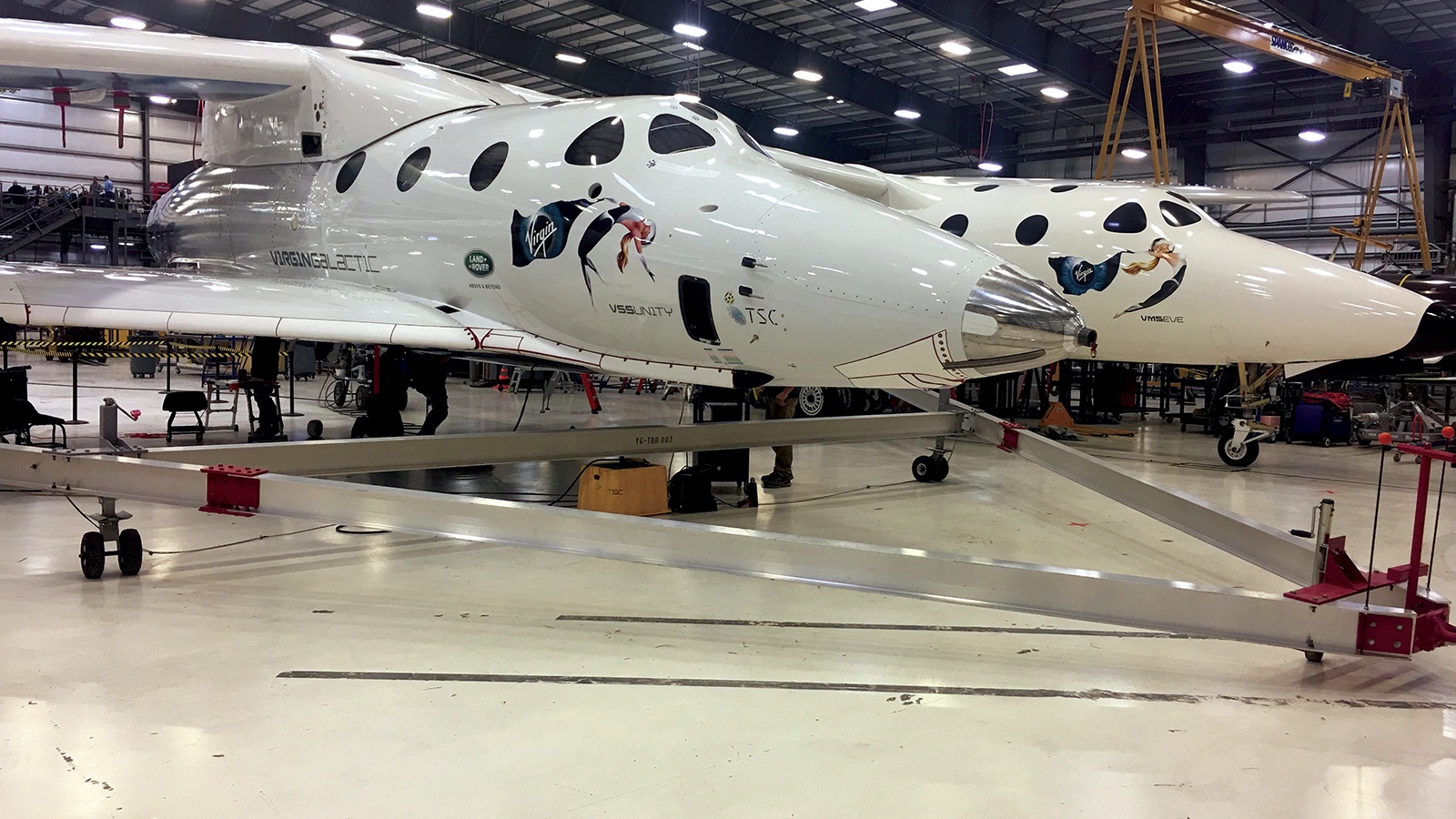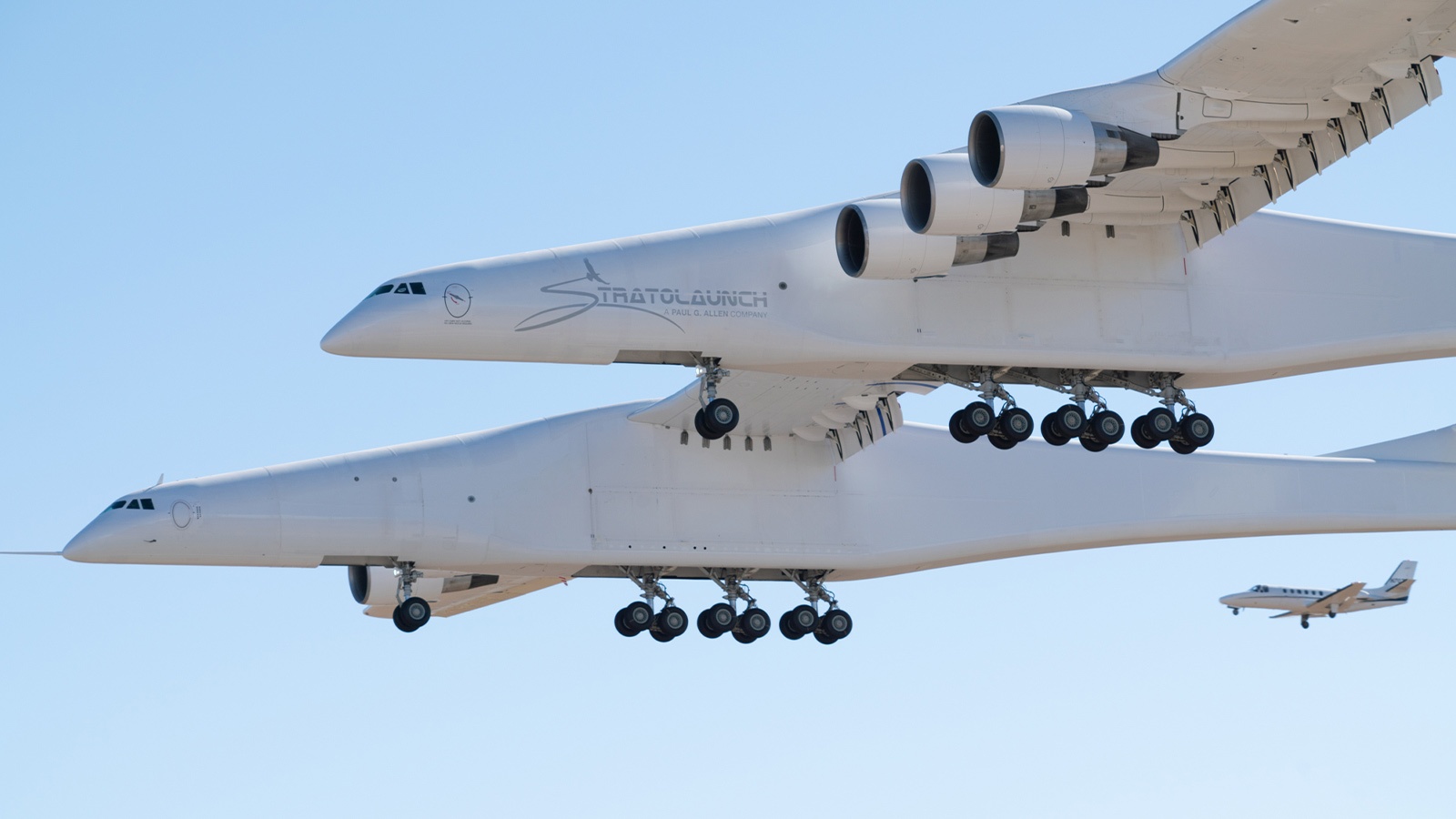Stay Up to Date
Submit your email address to receive the latest industry and Aerospace America news.
After years of testing and one tragedy, Virgin Galactic plans to start flying tourists to space later this year. Debra Werner captures what the experience will be like.
It’s surprisingly quiet when I enter an enormous hangar in Mojave, California, with a group of reporters. This is where The Spaceship Company is building Virgin Galactic’s spaceplanes. Over the desert not far from here, Chuck Yeager piloted the Bell X-1 through the sound barrier, and test pilots flew early versions of the SR-71 spy planes and space shuttle orbiters.
Those feats were, of course, paid for and managed by the U.S. government. In contrast, the private companies Virgin Galactic and its rival Blue Origin hope to spark a space tourism economy by rocketing paying passengers to space this year to enjoy the view and some moments of weightlessness. Virgin Galactic has had only minor government assistance (NASA purchased some seats for research payloads, for instance).
George Whitesides, the company’s chief executive, explains that some workers left early to rest before the next supersonic test flight scheduled for the following day at 7 a.m. If that schedule holds, a crew will return by midnight to load nitrous oxide propellant into the fuel tank of Virgin Space Ship Unity, the latest in a line of air-launched, rocket-propelled SpaceShipTwo vehicles. If all goes as planned, these vehicles will carry six tourists at a time to space on a 90-minute suborbital joy ride that will cost each passenger $250,000. The vehicle will be carried aloft by WhiteKnightTwo, a twin-fuselage aircraft with a 43-meter wingspan and two jet engines mounted on each wing. The WhiteKnightTwo carrier plane dominates the factory floor with VSS Unity slung beneath the center of the wingspan on three pylons. They also dwarf a red-and-black aerobatic trainer plane parked not far away. Pilots fly the Extra 300L to get used to the three to four G’s they will experience when WhiteKnightTwo releases them and a RocketMotorTwo kicks in.
Whitesides walks us over to Unity, an 18-meter-long carbon-fiber vehicle with twin tail booms that fold up alongside the fuselage during atmospheric re-entry (a process Virgin Galactic calls feathering). These fold down to act like wings with a 13-meter span for atmospheric flight.
Feathering was implicated in the 2014 accident that killed co-pilot Michael Alsbury and injured pilot Peter Siebold. The National Transportation Safety Board determined the co-pilot unlocked the feathering system of the VSS Enterprise too early, causing its twin tail booms to swing up prematurely. Aerodynamic loads ripped the spaceplane apart at an altitude of 50,000 feet. After the accident, Virgin Galactic modified the controls of the SpaceShipTwo design.
The craft I’m looking at now, I will learn later, traveled to space for a second time Feb. 22, two days after my visit instead of the next morning due to high winds. WhiteKnightTwo released Unity at an altitude of approximately 44,000 feet. Seconds later, chief pilot Dave Mackay and co-pilot Mike Masucci ignited the rocket plane’s engine powered by hydroxyl-terminated polybutadiene with the liquid nitrous oxide propellant. Unity completed its first full-duration rocket burn, lasting about 60 seconds as it soared to 89.9 kilometers and reached Mach 3.04 before gliding back to the runway at the Mojave Air and Space Port. The entire flight lasted about 52 minutes.
It was Virgin Galactic’s second flight beyond the 80-km mark, where NASA awards astronaut wings, and the first with a third crew member. Beth Moses, Virgin Galactic’s chief astronaut instructor, unstrapped her seat belts and floated around the cabin to evaluate the experience for future passengers.
British billionaire Richard Branson, who established Virgin Galactic in 2004 and founded The Spaceship Company with aerospace engineer Burt Rutan in 2005, plans to ride aboard SpaceShipTwo’s first tourism flight later this year. Branson’s Virgin Group sponsored the test flight of Rutan’s SpaceShipOne, the 5-meter-wingspan composite spaceplane that in 2004 won the Ansari X Prize by reaching altitudes of 103 and 113 km during flights five days apart. Virgin Galactic’s SpaceShipTwo draws on the design of SpaceShipOne but is much larger with seats for two pilots and six passengers. As of early March, 600 people from 58 countries had made fully refundable deposits to fly on Virgin Galactic’s spaceplanes.
We walk behind a gray curtain in a corner of the hangar and are shown a curved video screen and a replica of a SpaceShipTwo cockpit, including the pilot and co-pilot seats. This simulator is where pilots train, complete with visuals and sound effects. Someone clicks the simulator on, and we see the view awaiting Virgin Galactic’s passengers. WhiteKnightTwo takes off and climbs into a cloudless desert sky.
After a few minutes, the spaceplane is released. It falls momentarily and then the rocket roars to life. We climb almost straight up for about 90 seconds, accelerating to about three times the speed of sound. When the rocket motor finishes firing, the spaceplane’s momentum continues to carry us higher, but there’s almost no sound. “You get a sense of the stillness of the experience,” Whitesides says. The simulated view is breathtaking, and it makes me wonder if someday when space travel becomes more common and the price comes down, I might catch a ride on a spaceplane.
At the apogee, we level off. On a real mission, this is when the passengers would float from their seats to experience between three and five minutes of weightlessness. On the video screen, we see a view like the one out the spaceplane’s 12 windows. As Whitesides puts it, it’s an “amazing vista of planet Earth beneath us.” We start gliding back toward Earth and make a runway landing at Mojave. Test flights are being done here at Mojave before operations begin at Spaceport America in New Mexico, an FAA-licensed facility for vertical and horizontal launches adjacent to the U.S. Army’s White Sands Missile Range.
Whitesides won’t say how many more test flights he expects, but the next series will focus on making sure Unity “flies that way every time,” says Mike Moses, Virgin Galactic president.
Getting 600 passengers to space and back will require operating more than one spaceplane. On the factory floor, Virgin Galactic is assembling its next two. For the first one, the nose and aft portion of the fuselage are nearly completed along with the spherical oxidizer tank that goes in the middle. Workers have also finished building the tail booms in a separate facility.
“We are very close to bonding together the fuselage,” says Enrico Palermo, The Spaceship Company president. “The main structural part remaining is the booms and the feather.” Over the next year, workers will finish installing the wiring, brakes and other components.
It’s taking Virgin Galactic far longer than expected to begin paid flights. When Branson established the company, he wanted to start flying customers in 2007. If it’s any consolation, competitor Blue Origin, the commercial space tourism company started in 2000 by billionaire Amazon founder Jeff Bezos, isn’t carrying passengers yet either.
As of early March, Blue Origin had performed 10 uncrewed flight tests of New Shepard, the vertical takeoff and landing spacecraft comprised of a six-passenger capsule and a booster powered by Blue Origin’s liquid hydrogen and liquid oxygen-fueled BE-3 engine. Blue Origin’s capsule reached an altitude of 106.9 km on Jan. 23 after lifting off from the company’s West Texas launch site. Like Virgin Galactic, Blue Origin plans to bring people onboard sometime this year.
About Debra Werner
A longtime contributor to Aerospace America, Debra is also a correspondent for Space News on the West Coast of the United States.
Related Posts
Stay Up to Date
Submit your email address to receive the latest industry and Aerospace America news.







